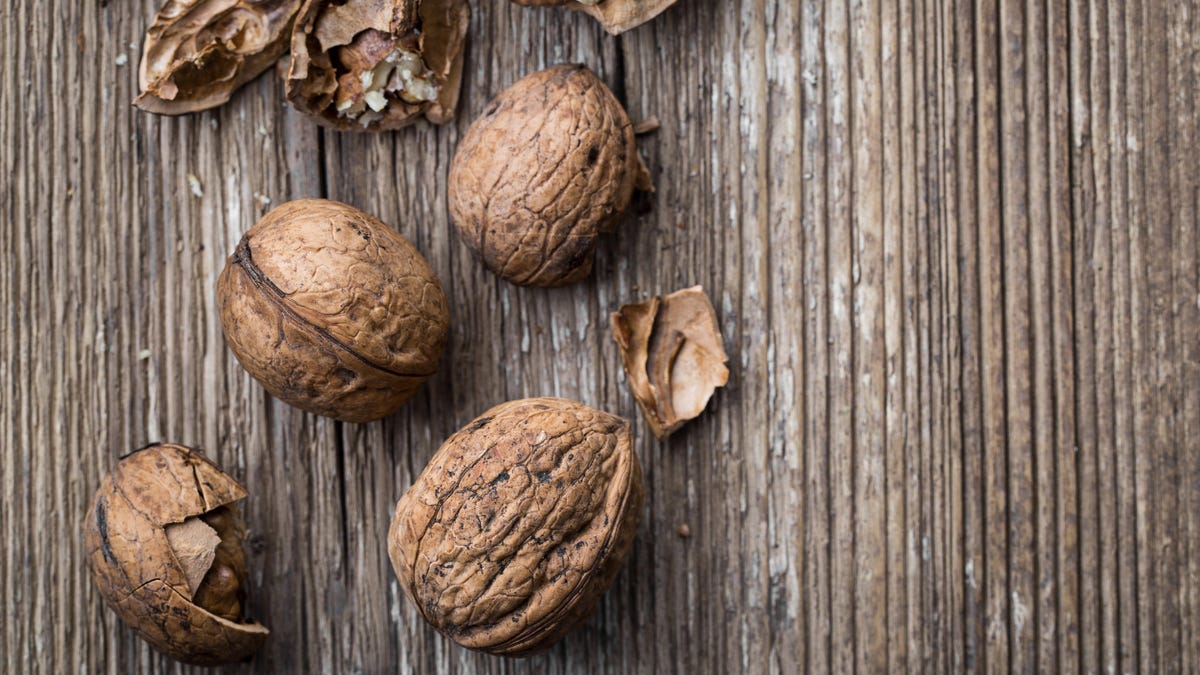Your Wood Furniture Needs a Walnut
Fans of vintage or antique wood furniture know that these older pieces come with some trade-offs. For example, older, solid wood furniture was built to last—unlike modern particle board counterparts. But because of this, it can be extremely heavy...


Photo: ulrich22 (Shutterstock)
Fans of vintage or antique wood furniture know that these older pieces come with some trade-offs. For example, older, solid wood furniture was built to last—unlike modern particle board counterparts. But because of this, it can be extremely heavy (i.e. difficult to move), and be pretty pricey if it’s in pristine condition.
That’s another part of the trade-off: Furniture that was made to be around for a lifetime (or even several generations) may remain sturdy, but if it’s being used regularly, it will likely accumulate scratches, dents, and other marks over the years. The upside of this, though, is that it means you can score some amazing vintage wood furniture—scratches and dings included—for low (or at least reasonable) prices.
If the scratches and other imperfections and signs of use bother you, there’s always the option of refinishing the piece. But if you’re mostly fine with them—or would be satisfied by something that makes the scratches look significantly better but not totally perfect, and is infinitely less work—you may want to get your hands on some walnuts. Here’s what to know.
How to fill in scratches on wood furniture with walnuts
Before we begin, let us start by saying that the walnut trick is not going to give you perfect results and make the scratches disappear completely. Also, we are aware that this is not a professional or permanent solution. It is, however, a cheap and very low-effort way to make your wood furniture look better, and is Bob Vila-approved.
Here’s what to do:
Crack open a walnut. (Or easier yet, buy some that are already de-shelled.)Rub the nut over/into the scratch in the same direction as the grain of the wood until it looks/feels like it’s filled in.Rub your finger over the nut-filled scratch to warm up the wood and release the oils of the walnut.Let it sit for about five minutes.Buff out the scratch using a clean, soft cloth.Does the walnut trick actually work?
After seeing so many dramatic before-and-after photos of these walnut transformations, I wanted to see if the trick actually produces those results in real life. So, I tried it out on an end table and a desk (both recent estate sale purchases), and here are the results:
Top of end table before:

Photo: Elizabeth Yuko
Top of end table after:

Photo: Elizabeth Yuko
Side of desk before:

Photo: Elizabeth Yuko
Side of desk after:

Photo: Elizabeth Yuko
Admittedly, the walnut trick worked far better than I had expected, and produces decent cosmetic results. With that in mind, here are a few observations and tips based solely on my own experience:
Before you start rubbing, peel the brown skin off the surface of the walnut meat. It not only gets in the way when you’re trying to fill in scratches, but it can also get stuck inside scratches and dings and make them look more visible than when you started.This trick is far more effective on shallow, surface-level scratches than it is on anything deeper than that. This is pretty clear in the photos of the end table. The scratches on the side of the desk were, for the most part, surface-level, so the walnut made more of a difference. Don’t worry about the color of the walnut matching the color of the wood. According to the Bob Vila article, “the oils from the nut will form a layer over the scratch, filling it in and darkening it,” and that was my experience when I tried it.Be sure to take the time to rub the walnut in with your finger before letting it sit and then buffing it out. The only color-matching issue I had was when I skipped this step.
 JaneWalter
JaneWalter 
































